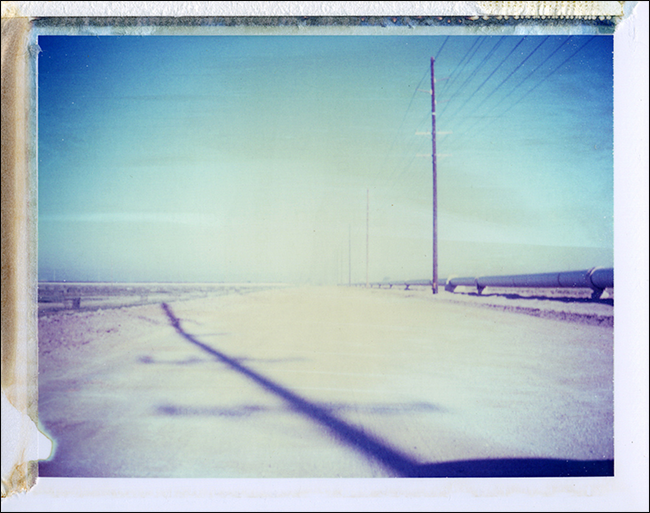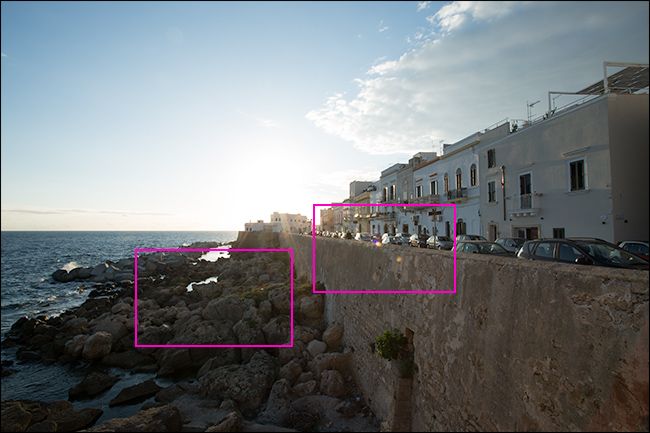Quick Links
A UV filter is a glass filter that attaches to the front of your camera lens and blocks ultraviolet rays. They used to be necessary for film photography, but now most photographers use them to protect their lenses.
There’s a lot of misinformation about UV filters out there. Some photographers swear they’re essential, while others are equally certain they’re a total waste of money. In some photography shops, the salespeople won’t let you leave with a new lens unless you’ve also ponied up for a UV filter; in others, they’ll laugh you out the door if you try to buy them. So what’s the truth? Let’s find out.
What Does a UV Filter Do?
A UV filter blocks UV light as it enters the lens. Think of it as sunscreen for your camera. Some old photography films were very sensitive to UV light so, if you didn’t use a UV filter, you would end up with a blue haze in your photos. This was especially common if you were shooting somewhere there was a lot of UV light, like on a really sunny day or at high altitude. You can see it in this polaroid by MoominSean on Flickr.
The thing is, modern films and digital sensors just aren’t sensitive to UV light. It doesn’t affect them the way it does older films. This means you don’t need a UV filter to block UV light in order to take good photos. However, this hasn’t stopped UV filters from picking up a secondary use as a protective filter for your lenses. Some camera shops are reluctant to let you walk out the door with a new lens, if you haven’t also bought a UV filter to protect it.
Does a UV Filter Protect Your Lens?
The basic idea is that, if you drop your $2,000 lens, instead of breaking the front element of the lens, you break your $35 UV filter instead. It’s a lot easier to just pick up a new filter rather than ship your lens off to—possibly—get repaired. Unfortunately, while the idea sounds good in theory, it doesn’t really hold out in practice.
Steve Perry from Backcountry Gallery drop tested a load of different lens filters and lenses and what he found was that the filters added minimal, if any, protection.
Perry’s big takeaway was that the glass in UV filters was a lot weaker than the glass used in the front element of lenses so the filters break from drops that don’t even ding a lens, regardless of whether or not there’s a filter on it. Also, if a lens was hit hard enough that the front element was damaged, there was normally large amounts of internal damage too. Even in the few cases where the UV filter might have protected the front element, the lens was dead anyway.
This all means that if you drop your lens with a UV filter and the filter breaks but not the lens, all you probably did was break a filter. The lens would have been fine either way. And if you drop your lens without a UV filter and it breaks, a filter wouldn’t have saved it.
This doesn’t mean UV filters offer no protection. It just means they don’t offer any protection from hard drops. They’re great for protecting your lens from dust, scratches, sand, sea spray, and other small environmental hazards.
The Optical Effects of UV Filters
There’s one final thing to consider about UV filters: putting any extra glass in front of your lenses affects the image quality.
UV filters block a small percentage (between 0.1 and 5%) of the light that passes through them. Because of how the light interacts with your filter, this reduces the sharpness and contrast of your images very slightly. It’s a barely noticeable effect and easily fixed in Photoshop, but it is there. It’s also worse in cheap filters from no-name brands. Filters from the likes of Hoya, B+W, Zeiss, Canon, and Nikon showed the least impact, while filters from brands like Tiffen showed the biggest.
More seriously, UV filters also make it more likely that you’ll get lens flare or ghosting in your images if you’re shooting a scene with a bright light source in it. In the image above, you can see some artifacts caused by the UV filter and the lens flare.
Should You Use a UV Filter?
Deciding whether or not you should use a UV filter isn’t a simple question. It really depends. The best advice I can give you is:
- A UV filter won’t protect your lens from much more than dust and scratches. If you’re shooting at the beach or in the desert, putting one on is a good idea, but otherwise, you’re probably fine without one.
- UV filters have a small effect on the quality of your images. Most of the time, it won’t make a difference. But if you absolutely need the highest quality image possible, or your photos are showing lens flare and other artifacts, you should remove your UV filter.
I’d argue that there’s definitely a place in your camera bag for a UV filter. But it's up to you whether keeping it on your camera all the time is worth it. I prefer to take my UV filters off if they’re affecting my images, other people prefer to put them on if they’re shooting somewhere dirty.
Image Credit: Abraksis/Shutterstock



